Mexico’s unique sculpture gardens: Where art meets nature
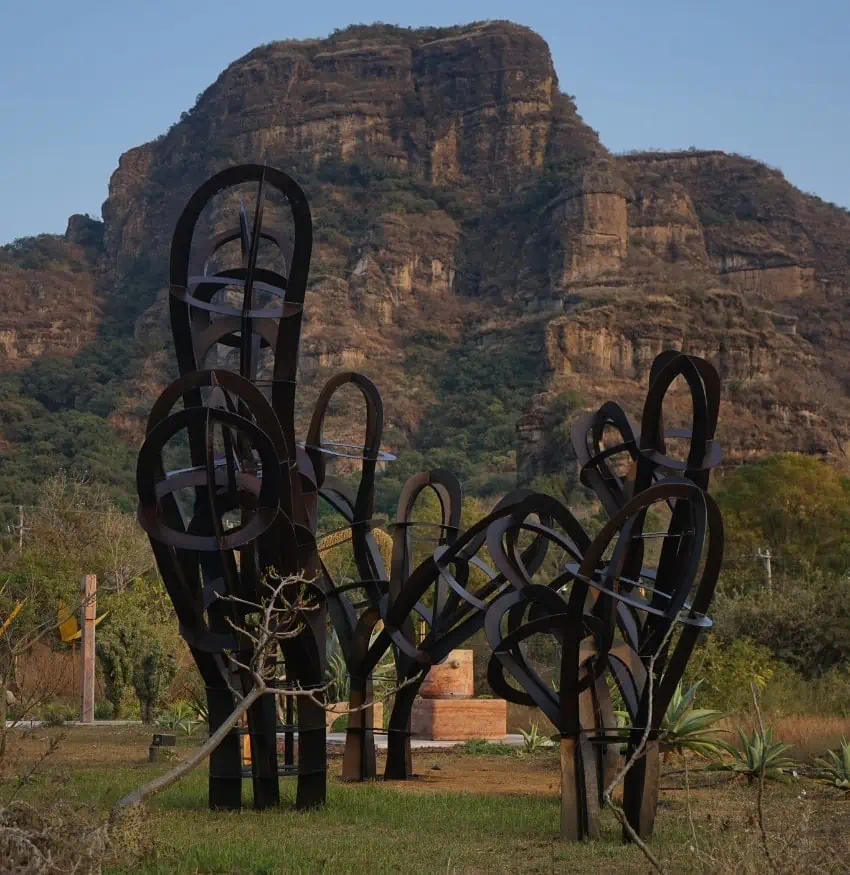
Though best known for its murals, Mexico has an important sculpture heritage and some interesting takes on how to exhibit three-dimensional art in nature. Sculpture gardens are not unique to Mexico, but for those of us from northern climes, the idea of enjoying nature and art in January is one reason why we love this country.
Las Pozas
Mexico’s most famous sculpture garden is Edward James’ Las Pozas, his former home in a small box canyon in Xilitla, San Luis Potosí. Although not formally trained as an artist or architect, James sketched out what he wanted and relied on the talents of local artisans to create the garden’s fantastic forms with rebar and concrete.
At its height, Las Pozas was a whirl of dream-like forms and colors, but James did not provide for the maintenance of the space after his death. Despite evident deterioration, what remains amazes the thousands of people visiting Las Pozas every year.
UNAM Sculpture Space
The second most famous example is the Sculpture Space of the National Autonomous University of Mexico. The Space is part of and an homage to the massive University City campus south of the city and its local environment.

Until the 20th century, the jagged, solidified lava fields of El Pedregal – meaning rocky ground in Spanish – were untouchable. But with new technology, the federal government decided the best way to use the increasingly valuable space and still conserve at least some of its natural heritage was to relocate its premier public university there.
University City’s architecture is marked by modern design and classic muralism. Not to be left out, a group of famous Mexican sculptors proposed a garden. Federico Silva, Hersúa, Helen Escobedo, Sebastián, Mathias Goeritz, and Manuel Felguérez worked together to create the main work, a 120-meter diameter ring of volcanic stone with 64 prism structures that pays tribute to Mesoamerican architecture, the modern world and the nature around the structure.
In its center, a small piece of El Pedregal remains exactly as before human intervention. When it was constructed, there were clear views of Popocatépetl and other mountains, unfortunately now partially obscured by sprawl and smog. Each of the contributing artists also created individual works with themes related to past and present, which can be visited from the main work on a path set up for this purpose.
Dilao
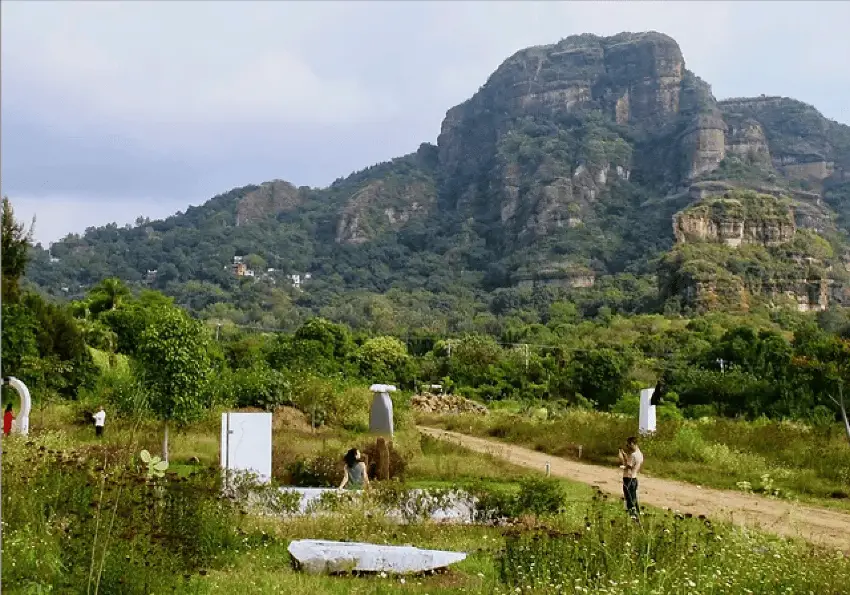
Philippines-born sculptor Eduardo Olbés conceived of his Dilao garden specifically for public outreach and the preservation of sculpture as an art form.
In Olbés’ “Search for beauty,” works done by the artist and others like Julio Martínez Barneche and others are selected for their suitability for outdoor exhibition. The unique vegetation and craggy mountains of Tepoztlán, a Pueblo Mágico and popular weekend getaway for Mexico City residents, surround the sculptures.
Dilao hosts artistic and cultural events to attract visitors, such as those related to gastronomy, music, dance and theater. The entrance fee of $100 pesos is for the upkeep of the space and the over 800 trees planted there.
JEX

The city of Xalapa, Veracruz, has cultural amenities that rival larger communities. One of these is the Xalapa Sculpture Garden (JEX), founded in 1998 with a donation of a work by Japanese-born sculptor and cultural promoter Ryuchi Yahagi.
Since then, the garden has amassed a permanent collection of 80 medium and large-sized sculptures seeded among native vegetation and footpaths for visitors. In addition, the site has facilities to host temporary exhibits, concerts, dance recitals and more in coordination with the University of Veracruz (UV) and the Veracruz Institute of Culture.
Integrated sculpture gardens
Most of Mexico’s sculpture gardens are part of larger cultural spaces, often to connect the space to a larger context.
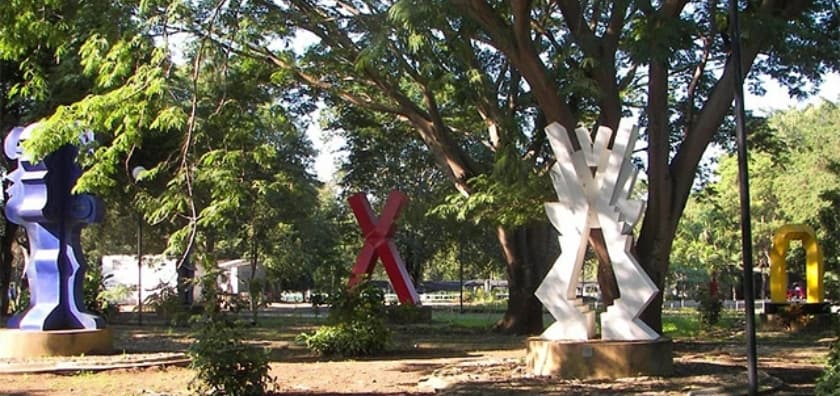
Juan Soriano Sculpture Garden is the state of Colima’s homage to Mexico’s internationally renowned sculptor. It was inaugurated in 2002 with Soriano’s work Pájaro sobre ola (Bird over wave). Ten other pieces by the artist have been added, along with works by Jazzamoart, Irela Gonzada, Sebastián, José Luis Cuevas and Atushi Shikata. It is part of Colimas State Arts Center, which set up a similar garden exhibit of Soriano’s work in Poland in 2009,
Mexico City Modern Art Museum
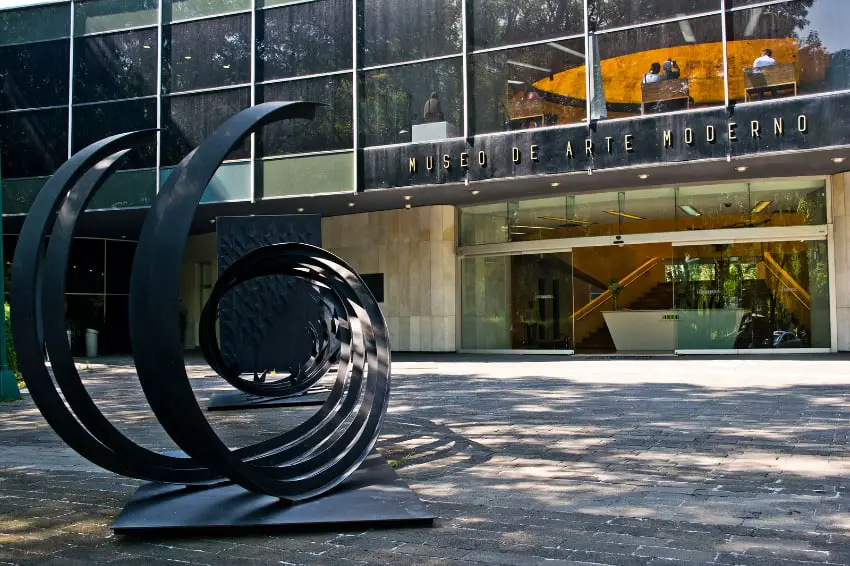
Mexico City’s premier museum for modern art is located in its premier natural space – Chapultepec Park. In addition to its impressive interior collection, the museum has a sculpture garden with 35 works from the 20th and 21st centuries by names such as Juan Soriano, Tosia Malamud, Isaías Cervantes Rodríguez, Rosa Castillo and Salvador Manzano.
Experiences that combine sculpture and nature in Mexico do not always have the name “sculpture garden” attached to them, but the experience is the same.
Culiacán Botanical Garden
Despite its unfortunate reputation for violence, Culiacán has perhaps one of the best botanical gardens in Mexico, recommended by garden and conservation groups in Mexico and the U.S. It conserves over 1,000 species of plants from around the world and supports over 200 animal species (146 are birds). It is also home to the Mexico National Palm Tree Collection.

It also received a generous permanent loan of modern sculpture from Isabel and Agustín Coppel (of the Coppel department stores), with works with social and ecological themes by 38 Mexican and international artists, including Francis Alys, Gabriel Orozco, Javier Marín, Kiyoto Ota, Sofía Taboas and Teresa Margolles.
Wirikuta Botanical Park
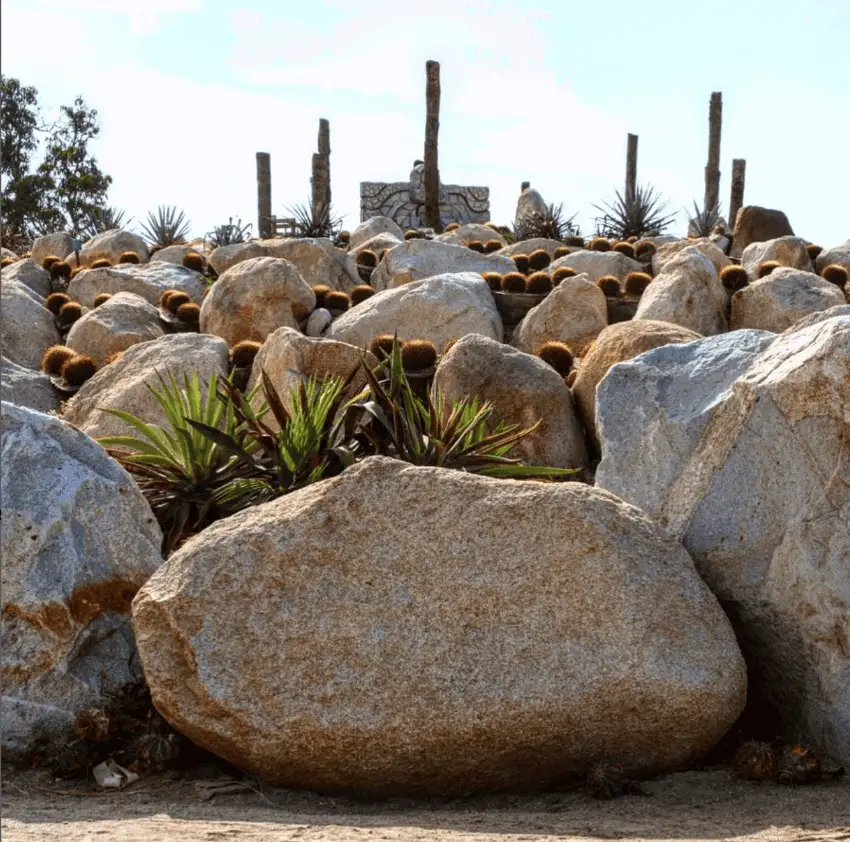
This park, which unfortunately is closed for the time being, is worth mentioning because of its unique take on what a “sculpture garden” is.
Covering over 10,000 hectares just outside San José del Cabo, designer and botanist Josef Schrott eschewed long, boring rows of plants with labels.
Instead, he contextualized the many cactus and succulent species from Baja and other parts of the world among reproductions of works by influential Mexican artists such as José Luis Cuevas, Manuel Felguérez, Leonora Carrington and Gabriel Macotela.
Even more iconic are three circular pyramids based on Wirikuta (Huichol) ceremonial sites, which various species of cacti serve to define. There is also a labyrinth with over 1,000 bonsai bougainvillea plants.
There are many more examples of outdoor sculpture spaces all over Mexico, which are worth checking out to take advantage of what your piece of Mexico has to offer.
Leigh Thelmadatter arrived in Mexico over 20 years ago and fell in love with the land and the culture in particular its handcrafts and art. She is the author of Mexican Cartonería: Paper, Paste and Fiesta (Schiffer 2019). Her culture column appears regularly on Mexico News Daily.
Source: Mexico News Daily

